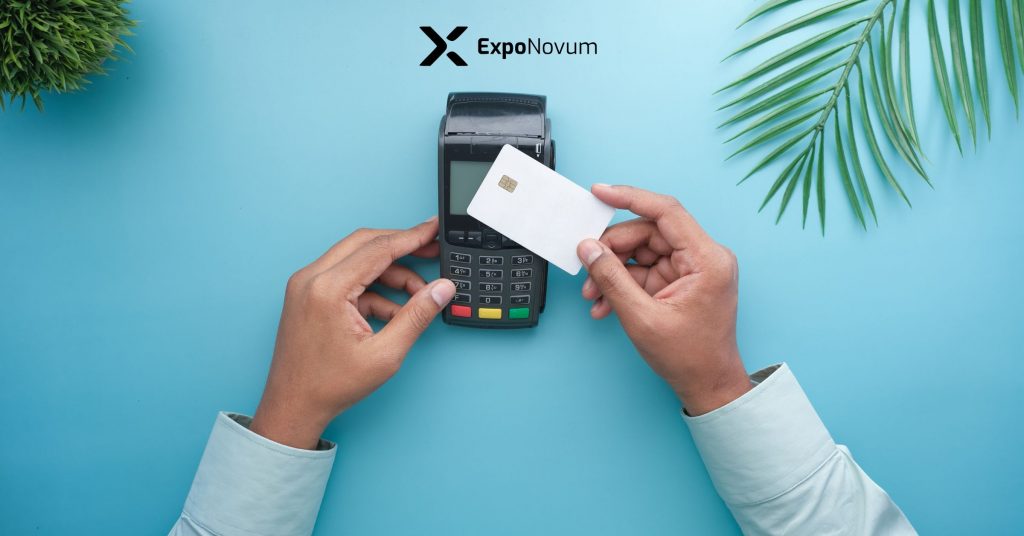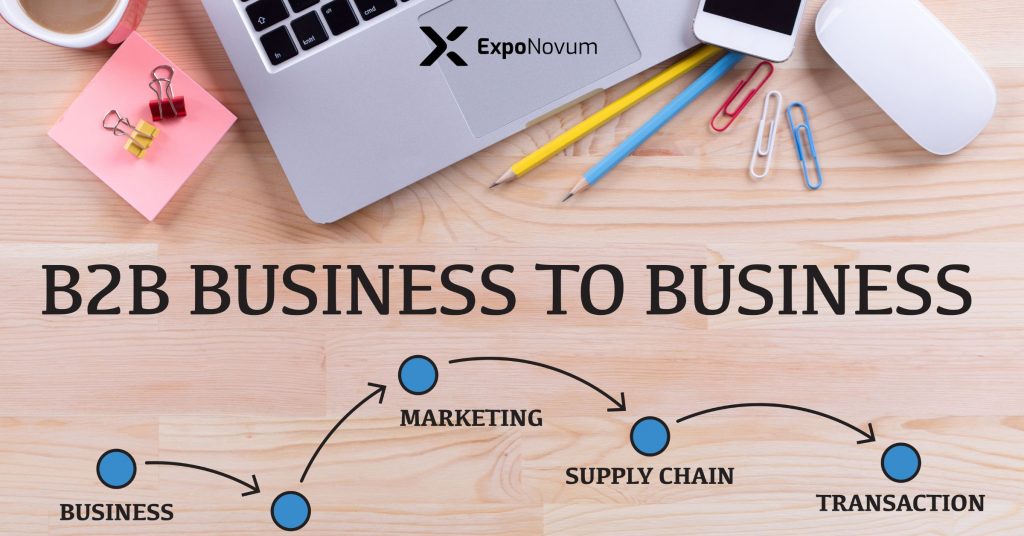Introduction
Picture this: You’re at the helm of a thriving business, steering the ship through the vast ocean of commerce. The wind in your sails? Efficient and secure B2B Credit Card Processing. It’s the lifeblood that keeps your business forging ahead, enabling you to trade with other businesses seamlessly and hassle-free.
But what happens when you need help navigating the intricate waters of B2B transactions? Or why it’s so crucial to have a firm grip on this process? Let’s embark on this journey together to uncover the answers.
B2B Credit Card Processing is more than just a mundane operational task. It’s a strategic function that can fuel your business growth, foster stronger customer relationships, and give you a competitive edge in the market. But it’s not all smooth sailing. The journey to mastering B2B Credit Card Processing can be fraught with complexities and challenges. However, with the right knowledge and strategies, you can chart a course to success.
Understanding B2B Credit Card Processing
Before we delve into the techniques for mastering B2B Credit Card Processing, it’s essential to understand what it is and how it works.
Definition and Explanation of B2B Credit Card Processing
B2B Credit Card Processing is the system through which businesses can make and receive payments from other businesses using credit cards. It involves a series of steps, including authorization, batching, clearing, and funding, all facilitated by various entities such as the merchant, the payment processor, the issuing bank, and the credit card network.
How B2B Credit Card Processing Works
Let’s break down the process:
- Authorization: When a business makes a purchase, the merchant requests the buyer’s credit card issuer to check if they have sufficient credit to cover the transaction.
- Batching: At the end of the business day, the merchant sends all their authorized transactions in a batch to their payment processor.
- Clearing: The payment processor forwards the batch to the appropriate credit card network (like Visa or Mastercard), sending each transaction to the issuing bank for posting.
- Funding: The issuing bank transfers the funds to the merchant’s bank, completing the transaction.
This process may seem straightforward, but B2B transactions often involve larger amounts, more complex pricing structures, and more stringent security requirements than Business-to-Consumer (B2C) transactions. This brings us to the role of B2B Credit Card Processing in the supply chain.
The Role of B2B Credit Card Processing in the Supply Chain
In the supply chain, B2B Credit Card Processing is the financial link between suppliers, manufacturers, wholesalers, and retailers. It enables businesses to purchase raw materials, pay for services, and settle accounts while maintaining a record of transactions for accounting and auditing purposes.
Moreover, efficient B2B Credit Card Processing can lead to smoother operations, improved cash flow, and stronger business relationships. It can also provide businesses with valuable data, helping them track spending, identify trends, and make informed decisions.

Technique 1: Navigating the Complexity of B2B Credit Card Processing
B2B transactions are inherently more complex than their B2C counterparts. They often involve larger transaction volumes, higher amounts, and more stringent security requirements. Understanding these complexities is the first step towards mastering B2B Credit Card Processing.
Understanding the Complexity
In B2B transactions, the pricing structure is often tiered or based on the level of transaction detail provided. This is known as “interchange” and can significantly impact the cost of processing credit card payments. Additionally, B2B transactions often require enhanced data processing, which involves capturing and transmitting additional transaction details for better reporting and analysis.
Navigating the Complexity
To navigate these complexities, businesses need to clearly understand their transaction patterns and choose a payment processor that can cater to their specific needs. They must also ensure they capture and provide the transaction details to qualify for lower interchange rates.
Technique 2: Choosing the Right B2B Payment Method
Various payment methods are available for B2B transactions, each with its own advantages and disadvantages. Choosing the right one can significantly impact the efficiency and cost-effectiveness of your payment processing.
Overview of B2B Payment Methods
The most common B2B payment methods include:
- Credit Cards: Widely accepted and provide enhanced data for reporting and analysis. However, they can have higher processing fees.
- ACH Transfers: Cost-effective and suitable for large, recurring payments. However, they can be slower and require more setup.
- Wire Transfers: Fast and secure but expensive for frequent transactions.
- Checks: Traditional and often preferred by some businesses, but they can be slow and prone to errors and fraud.
Choosing the Right Payment Method
The right payment method for your business depends on various factors, including the nature of your transactions, your cash flow needs, and your capacity to manage the payment process. It’s important to evaluate each option carefully and consider your business needs and your customers’ needs.

Technique 3: Minimizing B2B Credit Card Processing Fees
One of the major concerns for businesses regarding B2B credit card processing is the associated fees. These fees can add up quickly, especially for businesses that process a high volume of transactions. However, there are strategies to minimize these costs.
Understanding B2B Credit Card Processing Fees
Processing fees are typically composed of three parts:
- The interchange fee (set by the credit card networks)
- The assessment fee (also set by the networks)
- The processor’s markup
The interchange fee is often the largest portion and varies depending on factors like the type of card, transaction type, and data level provided.
Strategies to Minimize Processing Fees
- Provide Level 2 and Level 3 Data: Additional details about your transaction to the credit card network. Providing this data can qualify you for lower interchange rates.
- Negotiate with Your Processor: Some fees, particularly the processor’s markup, can be negotiated. It’s worth discussing this with your processor, especially if you have a high transaction volume.
- Regularly Review Your Statements: This can help you spot any errors or unnecessary fees and keep track of how much you’re spending on processing costs.
Also Read:
Maximize Your Financial Flexibility: Understanding Chase Credit Card Transfer Credit Limit
Card Not Accepting Instant Deposits? 5 Amazing Troubleshooting Steps
Top 11 Revolutionary Benefits Of Using A Payment Solution For Small Businesses In 2023
Mastering The World of Alternative Payment Methods: A Comprehensive Guide
Technique 4: Leveraging Commercial Credit Cards
Commercial credit cards can offer a range of benefits for B2B transactions, including enhanced data, cash-back rewards, and extended payment terms. However, they also come with higher processing fees, so it’s important to use them strategically.
How to Effectively Use Commercial Credit Cards
- Use for Large Purchases: The benefits of commercial cards often outweigh the higher fees for large purchases. Plus, large transactions can often qualify for lower interchange rates.
- Take Advantage of Rewards: Many commercial cards offer cash back or other rewards, which can offset the cost of higher fees.
- Use for Recurring Payments: Commercial cards can be a convenient option for recurring payments, as they allow for easy tracking and reconciliation.
Technique 5: Utilizing Pre-Authorizations
Pre-authorizations can be a useful tool in B2B credit card processing. They allow you to verify a cardholder’s credit limit before processing a transaction, reducing the risk of declined transactions.
The Benefits of Pre-Authorizations
- Reduced Risk: Pre-authorizations reduce the risk of declined transactions by verifying the cardholder’s credit limit upfront.
- Improved Cash Flow Management: By knowing that payment will be approved, you can better manage your cash flow and financial planning.
- Enhanced Customer Service: Pre-authorizations can improve the customer experience by ensuring smooth and successful transactions.

Technique 6: Setting Up a B2B Merchant Account
A B2B merchant account is a type of bank account that allows businesses to accept credit card payments from other businesses. Setting up a B2B merchant account is crucial in establishing a robust B2B credit card processing system.
Steps to Set Up a B2B Merchant Account
- Choose a Merchant Services Provider: Look for a provider specializing in B2B transactions and offering competitive rates, reliable customer service, and robust security features.
- Apply for a Merchant Account: This typically involves providing information about your business, including your business type, ownership details, and financial history.
- Set Up Your Payment Gateway: This technology encrypts and transmits credit card information between your business, the payment processor, and the issuing bank.
Tips for Successful B2B Merchant Account Setup
- Understand Your Business Needs: Different businesses have different needs regarding payment processing. Before choosing a merchant services provider, understand your transaction volume, average transaction size, and industry-specific requirements.
- Prioritize Security: B2B transactions often involve large amounts of money, making security a top priority. Ensure your provider follows the latest security standards and offers fraud prevention tools.
- Consider Integration Capabilities: Your payment processing system should integrate seamlessly with your existing business systems, such as your accounting software or CRM.
Technique 7: Choosing the Right B2B Payment Solution
Various B2B payment solutions are available in the market, each with its own features and benefits. Choosing the right solution can significantly enhance your payment processing efficiency and effectiveness.
Overview of B2B Payment Solutions
B2B payment solutions range from simple gateways to comprehensive payment management systems. They can offer features like automated invoicing, payment tracking, multi-currency support, and integration with accounting systems.
How to Choose the Best B2B Payment Solution
- Evaluate Your Needs: Consider your transaction volume, international payment needs, desired payment methods, and integration requirements.
- Compare Features: Look for features that streamline your payment process, such as automated invoicing, payment reminders, and detailed reporting.
- Consider Costs: Understand the pricing structure, including setup fees, transaction fees, and additional costs for premium features or services.
Technique 8: Building Effective B2B Partnerships
Building effective B2B partnerships can enhance credit card processing in several ways. It can help you access better technology, negotiate lower fees, and improve your overall payment process.
The Benefits of B2B Partnerships
- Access to Better Technology: Partnering with a leading payment processor or technology provider can give you access to the latest payment technologies and systems.
- Negotiating Power: A strong partnership can give you more leverage in negotiating lower fees or better terms with your payment processor.
- Improved Payment Process: A good partner can provide valuable insights and support to help you streamline your payment process and overcome any challenges.
Technique 9: Implementing Enhanced Data Reporting
In the realm of B2B transactions, data is king. Enhanced data reporting provides a clearer view of your business operations and helps qualify for lower interchange rates.
The Importance of Enhanced Data in B2B Transactions
Enhanced data, also known as Level 2 and Level 3 data, includes additional information about a transaction, such as item descriptions, quantities, tax amounts, and more. This data is crucial for several reasons:
- Detailed Reporting: Enhanced data provides a more detailed view of your transactions, helping with accounting, budgeting, and financial planning.
- Lower Interchange Rates: Many credit card networks offer lower interchange rates for transactions with enhanced data.
How to Implement Enhanced Data Reporting
Implementing enhanced data reporting involves capturing and transmitting additional transaction details. Here’s how to do it:
- Choose a Payment Processor that Supports Enhanced Data: Not all processors are equipped to handle Level 2 and Level 3 data. Make sure your processor can support this.
- Update Your Payment Systems: Your payment systems must be capable of capturing and transmitting enhanced data. This may require updating your software or hardware.
- Train Your Staff: Your team should understand the importance of enhanced data and know how to capture it accurately.

Technique 10: Qualifying for Lower Processing Rates
One of the key challenges in B2B credit card processing is managing costs, particularly processing fees. However, businesses can qualify for lower processing rates by providing more transaction information.
Understanding How to Qualify for Lower Processing Rates
Credit card networks set interchange rates based on the perceived risk and value of the transaction. Transactions with more information (like enhanced data) and those that meet certain criteria (like being from a government or corporate card) are often considered lower risk and can qualify for lower rates.
Steps to Achieve Lower Processing Rates
- Provide Enhanced Data: As mentioned earlier, Level 2 and Level 3 data can help you qualify for lower interchange rates.
- Use a Payment Gateway that Supports Lower-Rate Qualification: Some payment gateways are designed to help businesses qualify for lower rates by automatically including certain information in the transaction details.
- Negotiate with Your Payment Processor: If you have a high volume of transactions, you can negotiate lower rates with your payment processor.
Technique 11: Staying Updated with B2B Payment Trends
The world of B2B payments is constantly evolving, with new technologies, regulations, and trends always emerging. Staying updated with these trends is crucial for maintaining an efficient and competitive payment process.
Overview of Current B2B Payment Trends
Some current trends in B2B payments include the rise of digital payments, the increasing importance of security and fraud prevention, and the growing use of data analytics in payment processing.
The Importance of Staying Updated with Trends
Staying updated with B2B payment trends can help you:
- Stay Competitive: Understanding and adopting the latest trends can help you stay competitive and meet the changing expectations of your customers and partners.
- Improve Efficiency: Many new trends and technologies aim to make payment processing more efficient, saving time and money.
- Mitigate Risks: Staying updated with the latest security trends can help you mitigate risks and protect your business from fraud and data breaches.
- Conclusion
Mastering B2B Credit Card Processing is no small feat. It requires a deep understanding of the process, a strategic approach to choosing payment methods and solutions, and a commitment to staying updated with the latest trends and technologies. But the rewards are well worth the effort.
By implementing the techniques we’ve discussed, you can navigate the complexities of B2B transactions, minimize processing fees, leverage the benefits of commercial credit cards, and build effective B2B partnerships. You can also harness the power of enhanced data reporting, qualify for lower processing rates, and stay ahead of the curve in a rapidly evolving digital landscape.
Remember, mastering B2B Credit Card Processing is not a sprint but a marathon. It requires continuous learning, adaptation, and improvement. But with the right knowledge and strategies, you can transform this challenge into a competitive advantage for your business.
So, are you ready to master B2B Credit Card Processing and take your business to new heights?
References
This blog post is based on information extracted from top-ranked B2B Credit Card Processing articles. For more detailed information, you can refer to the original articles:
- The Complete Guide to B2B Payment Processing
- What You Need to Know About B2B Payment Processing
- Pros and Cons of Using Credit Cards for B2B Transactions
- B2B Payment Solutions Guide
- B2B Credit Card Processing
- B2B Credit Card Processing: How It Works
Happy reading, and here’s to your success in mastering B2B Credit Card Processing!